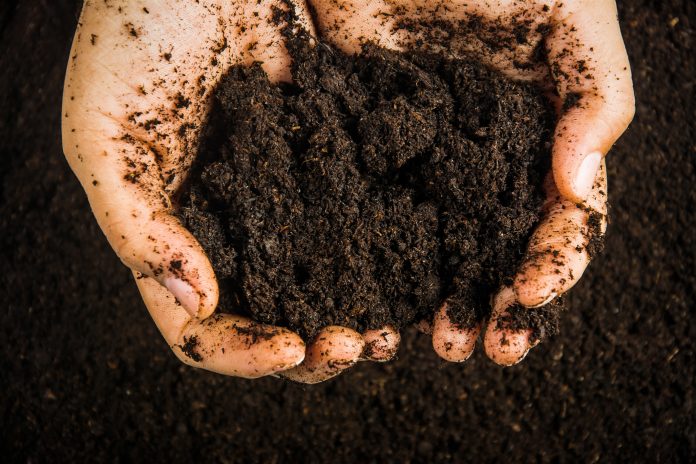By Thomas Press
Volume 5 Issue 2
After shutting down the garden last year and even perhaps planting a green manure crop, plants that can be turned back into the soil, it is time again to turn the soil and begin Spring anew. Turning the soil provides the benefit of aeration, aiding in nutrient release, as well as allowing you to see the general condition of the health of your garden soil at root depth. Should the soil need amended, now is the time to do so before planting or transplanting.
Next plan for what you want planted and where.
For smaller gardens, most of your companion plants may be on the perimeter save for those specifically interspersed for the benefit of the choice plants via nutrient release, insect repellent, and disease protection. Larger gardens may best benefit from zones with perimeters, making smaller garden plots. Once your garden is planted, regular watering may be effected. If your preferred method of watering is flood irrigation, then grade the garden rows so water flows from one end to the other and position your mulch pile at the top of the garden if you wish to water using mulch tea.
As mentioned previously in Kurple Magazine, mulch tea is quite valuable and will help the choice garden plants reach their greatest potential. This is also a great time to maintain, supplement, or newly install critter barriers and deterrents. As much as many people may like seeing cute furry creatures, most do not so much enjoy seeing them in the garden eating the produce. By installing perimeter barriers now, we can avoid trampling our garden later in the effort to stave off the cottontail thugs who would plunder our booty with vigor.
As any gardener and Monty Python fan can attest, it can be greatly difficult to rid ones self of a rabbit who has staked a claim. This goes for many creatures of the herbivore persuasion and not just the rabbits, that the sights and scents of fresh produce are irresistible. Physical barriers from green houses or concrete footers to chicken wire and bird netting can be helpful and aid success, but there is another and most powerful tool to be found in companion planting.
Companion Planting
Companion planting has been of great significance to the human civilization for several thousand years, seeing tribes, villages, and nations feed themselves with somewhat less effort than strictly gathering alone. It is a concept wherein plants are placed with or near other plants that provide benefit to the gardeners choice plants. Some of the benefits are protection from disease and pestilence, while other bounties come in the form of attracting pollinators and other beneficial insects, or in providing nutrition and medicine. In protecting from pestilence, there are plants which provide varying functions; those which attract predatory insects, those that lure harmful insects from, and those that lure insects beneficial to, the choice plants.
By having a copacetic botanical construct, or permaculture, your garden will be more likely to thrive and your work will be easier and more rewarding. As a simple for instance, I learned many years ago to plant marigolds interspersed amongst or as a perimeter for the tomato plants and found the delightful lack of worms and caterpillars in return. Another example is where some American Indians planted maize with beans and squash. The most fragile plant of these Three is corn, which is aided by the nitrogen fixing properties of beans, both of which can find protection from the spiny vines and leaves of the squash plant. The properties and functions of companion plants are varied and numerous, with companions to suit any garden large or small. Some companions are planted for their repellent characteristics, such as chrysanthemum, dahlia, geranium, chile pepper, garlic, mint, cilantro, dill, and basil. Other companions are planted to attract beneficial insects or distract away harmful insects; such as anise, marigold, parsley, hyssop, dill, yarrow, calendula, lavender, stinging nettle, fennel, sage, comfrey, lemon balm, wormwood, basil, borage, rosemary and catnip.
Other companion plants benefit the overall health of the soil by fixing nutrients such as nitrogen, calcium, sulfur and many more; such as beans, lentils, peas, comfrey, garlic, hyssop, chamomile and yarrow. There are so many potentially beneficial companions for your choice plants that your local nursery, seed store or garden center is likely to have what you need that you also like. A garden rich in plants that benefit each other will tend to be healthier and more robust, and provide you with healthful vegetables, herbs and spices. Below are listed some plants that are readily available and can thrive in the Middle Rio Grande Valley: alfalfa, basil, beans, borage, calendula, catnip, chamomile, chile pepper, chives, chrysanthemum, cilantro, citronella, comfrey, coriander, dill, fennel, foxglove, garlic, geranium, hyssop, lavender, lemon balm, marigold, marjoram, mullein, nasturtium, stinging nettle, oregano, parsley, parsnip, peppermint, rosemary, sage, sunflower, wormwood and yarrow. Beyond the numerous plants left out of this article, there are yet many more from which to choose to supplement your personal agricultural endeavor


















